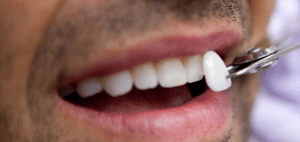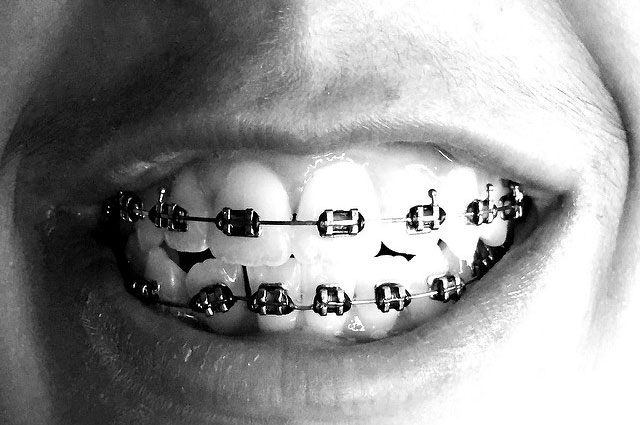If you are looking for that perfect smile—complete with aligned and healthy-looking teeth—you may notice that orthodontics and cosmetic dentistry are similar in their pursuits. Both orthodontists and cosmetic dentists are specialists who can help you correct imperfections that keep you from your teeth’s ideal appearance.
What Is An Orthodontist?
Orthodontics is a branch of dentistry that focuses on the misalignment of the teeth and jaws. An orthodontist begins his career as a dentist and then chooses orthodontics as a field of specialty—much in the same way as doctors choose to specialize in specific areas of medicine like neurology, psychiatry, rheumatology and pediatrics.
Besides how misalignments can affect the way you look, they also can cause medical issues such as facial pain, TMJ, speech impairments, chronic headaches, and even throat and sinus pain.
The American Association of Orthodontists (AAO) is the organization that regulates standards of practice in this specialty. Membership in this organization indicates that the orthodontist has received appropriate training in oral biology and biomechanics.
An orthodontist applies braces to fix most mechanical problems with the teeth and jaws. In some cases, he also may need to perform oral surgery in some cases. There are many types of braces, but all are aimed at fixing these most common issues:
- Anteroposterior deviations – These are most commonly knows as underbites and overbites. In an underbite, the lower teeth are positioned further forward than upper teeth. In an overbite, the upper teeth are positioned further forward than the lower teeth. Both of these positionings can cause difficulty with chewing and clear speech.
- Overcrowding – Overcrowding is one of the most common problems orthodontists treat. Overcrowding typically occurs when not enough jaw space exists for adult teeth to grow in alignment with existing teeth. Through treatment with braces, the orthodontist is able to realign the teeth.
- Spaced teeth – Spaced teeth occur when the jaw may be too wide and large spaces are in between the teeth. Along with how gaps affect appearance, these spaces also can promote tooth decay as it is easier for food to become lodged between the teeth.
- Aesthetic issues – In some cases, malocclusions or jaw deformities can affect the shape of the whole face. The orthodontist can restructure and realign the jaw, lips, and teeth to create an even smile.
What Is A Cosmetic Dentist?
Few dental schools provide training in cosmetic dentistry. Therefore, a successful and highly-qualified cosmetic dentist will have pursued graduate training in cosmetic dentistry after completing dental school.

Here are some of the procedures a cosmetic dentist performs:
- Dental Implants – These replace the roots of lost teeth. A dental implant—along with a prosthetic tooth built on top of the implant—replaces a missing tooth or teeth and helps to maintain the bone support of the neighboring teeth.
- Porcelain Crowns – A crown (or cap) is a cover that the dentist places over the surface of an entire tooth and bonds to the surface of the natural tooth. Of the available types, porcelain crowns look most natural and are most durable. However, they may occasionally need to be replaced. This procedure is often done after a root canal, where the dentist had to drill deeply into the tooth to remove root tissue. Dental crowns also can be used to protect weak teeth or repair broken teeth.
- Bonding – Dental bonding is a process where your dentist applies a composite resin to one or more teeth that have become discolored or physically damaged. The plastic resin will be tooth-colored to blend in and will strengthen the existing tooth to prevent it from further damage. Bonding is used to treat chipped, fractured, discolored or decaying teeth.
- Porcelain Veneers – Porcelain veneers are thin pieces of porcelain used to recreate the natural look of teeth, while also providing strength and resilience comparable to natural tooth enamel. A thin, custom-made shell of tooth-like material is placed over the front surface of the teeth to improve their appearance. Porcelain veneers resist stains and mimic the light-reflecting properties of natural teeth. Veneers are routinely used to fix teeth that are discolored, worn down, chipped, broken or have irregularly-shaped gaps.
- Orthodontic Treatment – Sometimes a cosmetic dentist also will perform alignment corrections, usually through one of the more aesthetically-pleasing options for braces such as Invisalign, or through the use of veneers to replace the need for braces.
- Teeth Whitening – Though a number of whitening methods exist, an in-office whitening done by a cosmetic dentist is considered the most effective (but also the most expensive). The dentist will apply peroxide with a laser to give you immediate whitening. Though much stronger chemicals are used in a professional treatment than with over-the-counter products, the dentist will apply a protective agent over your gums and lips to guard them against the high concentration of peroxide. The procedure is safe for your teeth and can last one or more years.
- Tooth-Colored Fillings – Cosmetic dentists use composite resins and porcelains to create a tooth-colored filling that is safe for the teeth and effective at preventing further tooth decay. The cost of tooth-colored fillings typically ranges between $150 and $200 per tooth, which is more expensive than metal fillings, which range from $75 to $145 per tooth.
Dentures – A cosmetic dentist will take extra steps to ensure that dentures look like natural teeth. Cosmetic dentures are more affordable than implants. Partial dentures replace groups of missing teeth or scattered teeth along the upper and/or lower jaw. Partial dentures attach to remaining teeth and have a gum-colored portion meant to blend in with the gum. Full dentures are similar to partial dentures in that they are prosthetic teeth and gums. The main difference is that full dentures replace an entire set of upper or lower teeth (or both).
How Do I Decide Which To See?
If you want to straighten misaligned teeth, you may have heard that veneers are a popular alternative to braces.
If you are looking for immediate results, veneers require just three visits to the dentist—one for a consultation and two to make and apply the veneers. They do not typically require any special aftercare beyond good oral hygiene practices.
Dental veneers can be quite pricey, however, with typical costs above $1,000 per tooth. They also will need to be replaced every five to 10 years. Another drawback is that you will, in a sense, damage healthy teeth. If your only issue is misalignment, then you should consider how many teeth you will alter by placing veneers on them.

Braces leave your teeth in tact, so they are a non-invasive way to straighten your smile. Additionally, braces can correct alignment issues with the jaw or bite, which can affect your overall health. You will spend significantly longer in treatment by wearing braces (1-3 years, on average), but having patience could lead to a healthier smile (and a much less expensive one).
If you are considering orthodontic treatment, call our experts at Orthodontic Associates at any of our nine convenient locations around Baltimore. Our team takes your specific needs and treatment goals into consideration. If you desire cosmetic procedures outside of our scope, our orthodontists can advise you on the pros and cons, while pointing you in the right direction. Your healthy, attractive smile is always our first priority.



 Dentures – A cosmetic dentist will take extra steps to ensure that
Dentures – A cosmetic dentist will take extra steps to ensure that 